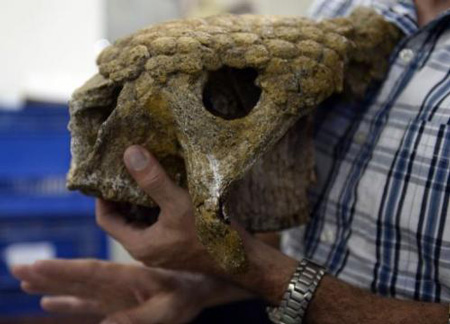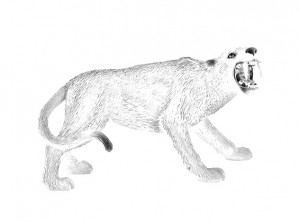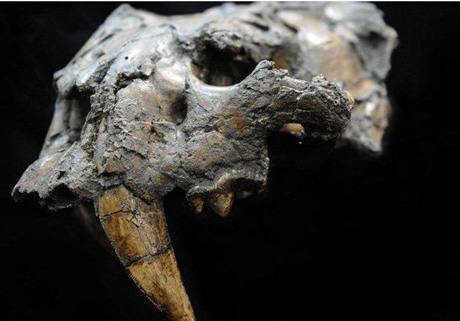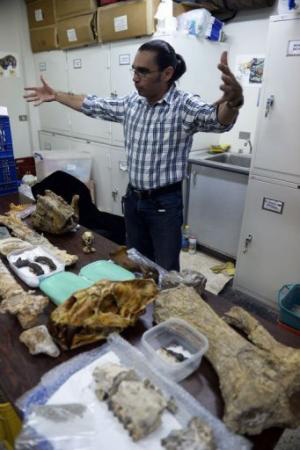Oil Companies Help Uncover “Treasure Trove” of Fossils
Geologists Help Uncover Large Number of South American Fossils
As geologists explore rock formations in search of fossil fuels then body and trace fossils are sometimes found as a consequence of their efforts. With the world’s high demand for hydrocarbons, more and more parts of our planet are having their geology mapped and charted, such work occasionally leads to a major fossil discovery.
The Venezuelan Institute for Scientific Research
Scientists from the Venezuelan Institute for Scientific Research (Venezuela), have been showing off a vast collection of more than 12,000 specimens that have been unearthed as a result of oil exploration. Recently, the Institute announced that a new palaeontology laboratory was going to be set up to permit the researchers to study the substantial fossil finds, specimens dating from the Late Pleistocene and Pliocene epochs in the main, but amongst the extensive collection there are some much older specimens, examples of early tetrapods from strata that dates back over 360 million years.
Venezuelan Fossils
As the scientists showcased their amazing fossil collection to the media, including cranial material from a car-sized glyptodont, a strong smell of petrol fills the air. This is a consequence of excavating fossils from tar pits. An aroma any scientist who has had the opportunity to work at the famous La Brea Tar Pits in Los Angeles (California) would be familiar with. Other impressive fossils include a 25,000 year old femur (thigh bone) from a Mastodon. However, despite this wealth of fossil material, the palaeontologists are still looking for undisputed evidence of the presence of one, rather special species in Late Pleistocene aged strata – us.
A Skull of a Glyptodont – Part of an Extensive Fossil Collection
Picture credit: Venezuelan Institute for Scientific Research
Commenting on the research, palaeontologist Ascania Rincon (Head of the Institute’s Laboratory of Palaeontology), stated that stone tools had been found indicating the presence of humans.
The palaeontologist said:
“We are close. You have to keep exploring the area. We have already found spearheads. What’s lacking is reliable indication that man hunted the megafauna that we are finding.”
Tar-stained Fossil Bones
Although no human fossils have been found to date in the Venezuelan deposits, the tar-stained bones of a woman have been found at La Brea, so why not in the Venezuela tar pits too. The scientific team are confident that they will find fossilised bones of early human settlers, such fossil evidence would help map the spread of our species through the Americas, from Alaska in the north, through what was to become Canada and the United States down to South America.
Fossil Crocodilians
Most of the fossils on display come from deposits to the north of the Orinoco River. The crocodiles that can be found in that region, would be dwarfed by the extinct species that have been unearthed by the geologists. Some of the fossil crocodilian bones hint at creatures more than ten metres in length, far bigger than any extant crocodile today. Around eight million years ago, the Orinoco was formed, followed a few million years later by the Isthmus of Panama which formed a land bridge between the continents of North and South America.
Some of the specimens that have been recovered hint at a bizarre fauna. For example, a featherless bird, that superficially resembles an iguana lizard, a three metre tall member of the Pelican family and giant ground sloths. The pride of the collection is fossil material from a species of sabre-toothed cat known as Homotherium venezuelensis, it took the scientists four years of hard preparation work before they could positively identify the fossils that they had as member of the Machairodontinae group of cats. This was a significant discovery, as although the Homotherium genus was very widespread, these were the first Homotherium fossils to be positively identified from South America.
A Typical Member of the Machairodontinae Group of Cats
Picture credit: Everything Dinosaur
Homotherium Specimen
The picture below shows the skull of a Homotherium specimen discovered as geologists prospected for oil reserves.
The Skull of an Ancient Sabre-Toothed Predator
Picture credit: Venezuelan Institute for Scientific Research
Commenting on the painstaking work undertaken by the team Ascania Rincon stated:
“Imagine a puzzle of more than five thousand pieces and you have just two hundred pieces that you are trying to interpret and draw a conclusion that might contribute something to science”.
Fossils Unearthed from Potential Venezuelan Oil Fields on Display
Picture credit: Venezuelan Institute for Scientific Research
The team have also hinted that fossils of something really unusual have been found, but they were reluctant to reveal more during the interviews with the press. Although, lacking some of the resources of better funded institutes, the dedication and enthusiasm of the research team has led to some important discoveries regarding the Miocene, Pliocene and Early Pleistocene fauna of this part of South America. Surveys to find oil have provided an insight into ancient ecosystems, serving as a reminder to our species how transient these ecosystems can be.
When asked about the value of the team’s work, a spokes person for the Institute replied:
“Palaeontology is fun. It seems that it has no use, but it has economic implications. With a fossil record, we can determine the age of an oil field.”
For models and replicas of prehistoric mammals and other extinct creatures: Mojo Fun Prehistoric Life Figures.





